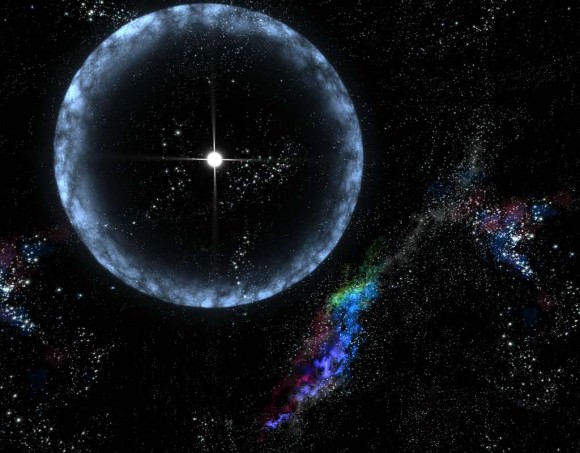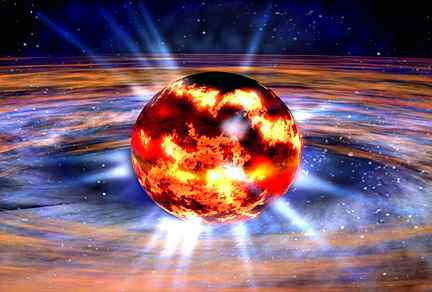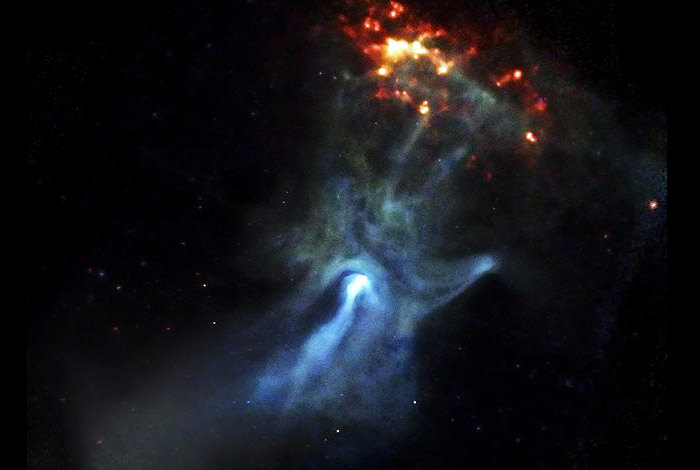That spooky hand in the image above is producing questions for scientists. While the shape only coincidentally looks like a human hand, scientists are still trying to figure out how a small star produced such a large shape visible in X-rays.
Pulsar star PSR B1509-58 (or B1509 for short) is a 12-mile (19-kilometer) remnant of a much larger star that exploded and left behind a quickly spinning neutron star. Energy leaves mostly via neutrino (or neutral particle) emission, with a bit more coming out via beta decay, or a radioactive process where charged particles leave from atoms.
Using a new model, scientists found that so much energy comes out from neutrino emission that there shouldn’t be enough left for the beta decay to set off the X-rays you see here in this image, or in other situations. Yet it’s still happening. And that’s why they’re hoping to take a closer look at the situation.

“Scientists are intrigued by what exactly powers these massive explosions, and understanding this would yield important insights about the fundamental forces in nature, especially on the astronomical/cosmological scale,” stated Peter Moller, who is with the theoretical division of Los Alamos National Laboratory and participated in the research.
Preliminary studies indicate that to better understand what’s happening on the surface of these objects, computer models must endeavor to “describe the shape of each individual nuclide” (or atom that has a certain number of protons and neutrons in its nucleus). That’s because not all of these nuclides are simple spheres.
Using facilities at Los Alamos, scientists created databases with different types of nuclides that had various beta-decay properties. They then plugged this into a Michigan State University model of neutron stars to see what energy was released as the stars accrete or come together.

The results stood against what was a “common assumption”, the scientists stated, that the radioactive action would be enough to power the X-rays. They urge more study on this front, especially using a proposed Facility for Rare Isotope Beams that would be built at Michigan State, using funding from the U.S. Department of Energy Office of Science. FRIB project participants are hoping that will be ready in the 2020s.
You can read more about the research in the Dec. 1 edition of Nature. It was led by Hendrik Schatz, a professor at the National Superconducting Cyclotron Laboratory at Michigan State.
Source: Los Alamos National Laboratory


Spectacular”!!